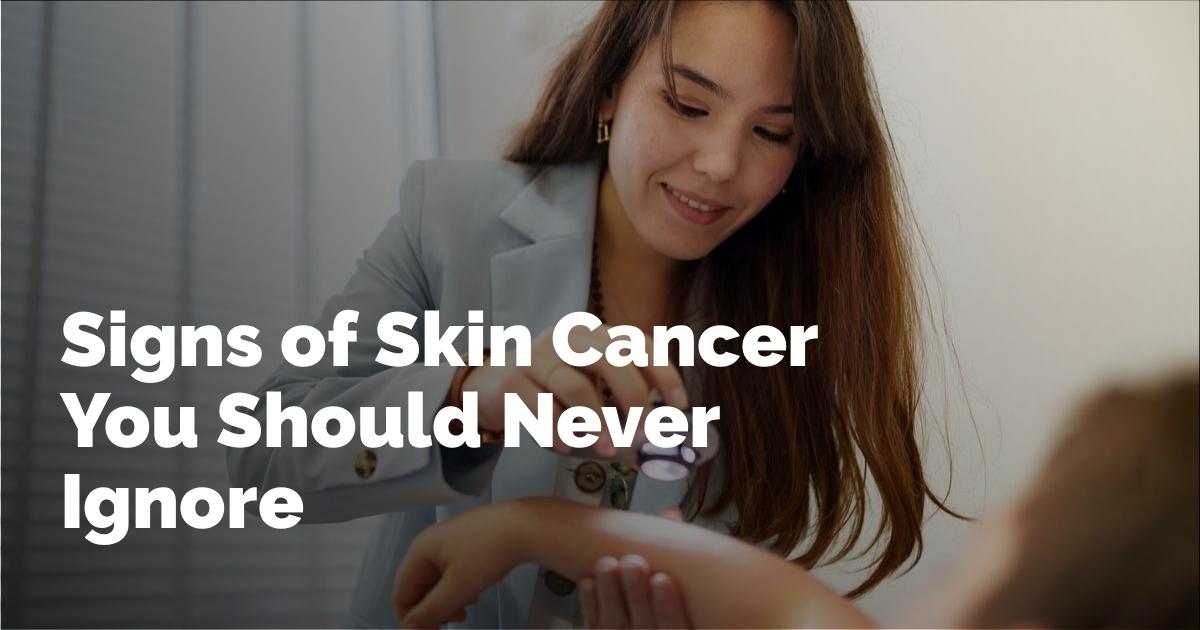Skin Cancer Awareness: Identifying, Preventing, and Understanding the Risks
Summer brings joy with its warmth and sunshine, but with sun enjoyment comes the crucial need for skin protection. While a reliable sunscreen is essential, it is merely the first line of defense against harmful ultraviolet (UV) rays and the consequential sun damage. Understanding and identifying the early signs of skin cancer could make all the difference in early treatment and prevention, thereby reducing the risk of this common disease. Here, we delve deep into the causes, appearance, and preventive measures against skin cancer to equip you with the knowledge you need to stay safe and healthy.
Signs and Symptoms: Understanding Skin Cancer
Common Misconceptions and Facts
Skin cancer holds the notorious title of being the most common form of cancer in the United States. Statistics reveal the startling fact that one in five Americans is likely to encounter this disease in their lifetime, according to the American Academy of Dermatology Association. However, despite its prevalence, there remain numerous misconceptions about skin cancer, particularly who it affects and how it manifests.
Contrary to some beliefs, skin cancer does not discriminate based on skin tone. Though people with lighter skin tones are at a higher risk, this does not render individuals with darker skin tones immune. It is essential to dispel these misconceptions to prevent oversight in any demographic.
Observable Signs of Skin Cancer
There are three primary types of skin cancer that experts routinely focus on: Basal cell carcinoma, Squamous cell carcinoma, and Melanoma. Each of these has distinct characteristics and warning signs:
-
Basal Cell Carcinoma (BCC): Representing about 80% of all skin cancer diagnoses, BCC often appears as a skin-colored, translucent bump with a shiny texture. In some cases, it may exhibit as a pink patch that easily bleeds. Most commonly found on areas with frequent sun exposure, such as the head, neck, and arms, BCC is treatable when detected early.
-
Squamous Cell Carcinoma (SCC): As the second most common form, SCC typically manifests as a firm red bump with a crusty center, resembling unhealed wounds or burn scars. The edges are often bluff and ragged, with a scaly texture.
-
Melanoma: Although less common in terms of sheer numbers, melanoma is one of the deadliest forms due to its potential to metastasize. The "ABCDE" rule helps in early identification:
-
Asymmetry: Uneven halves of a spot.
-
Border: Irregular, scalloped, or poorly defined edges.
-
Color: Multiple hues, including shades of black, brown, tan, and even red, white, or blue.
-
Diameter: Spots larger than six millimeters. However, melanoma can be diagnosed in smaller spots as well.
-
Evolution: Observable changes over time in size, shape, or color, accompanied by symptoms like itching or bleeding.
Identifying skin cancer, especially melanoma, is crucial as it can sometimes mimic benign moles, evolving rapidly and aggressively if unnoticed.
Skin Cancer Beyond Sun-Exposed Areas
While many might assume skin cancer only occurs on sun-exposed skin, it can indeed develop in less visible areas. Notably, Acral melanoma may appear on the palms, soles, and under nails and is more common among individuals with darker skin tones. Additionally, melanoma can surface in mucosal regions, including the mouth, eyes, and genital areas—further highlighting the need for comprehensive skin checks beyond typically exposed areas.
Causes and Contributors: Pathways to Skin Cancer Risk
Dominant Risk Factors
Exposure to ultraviolet rays remains the leading cause of skin cancer, emphasizing the criticality of protection against UV radiation. However, other contributing factors can exacerbate risk, such as a family history of skin cancer, frequent tanning bed use, chronic skin inflammation, and even a compromised immune system.
Moreover, there exist virus-driven, rarer forms of skin cancer, such as Merkel cell carcinoma and Kaposi sarcoma. These underscore the diversity and potential complexity of skin cancer's etiology.
Comprehensive Skin Checks and Mole Monitoring
Regular examination of the skin for new moles or changes in existing ones is vital. Any new growths, discoloration, or irregularities should be scrutinized. The "ABCDE" rule can be a practical guide, but when in doubt, consulting a dermatologist is the best course of action.
Skin Cancer Prevention: Steps Toward Safer Sun Exposure
Effective Preventative Measures
Sun protection is paramount, and utilizing sunscreen is a non-negotiable daily routine, irrespective of the season. The American Academy of Dermatology recommends selecting a broad-spectrum sunscreen, ideally mineral-based, with at least a 30 SPF rating. Regular reapplication every two hours is advisable, especially during active outdoor periods.
Yet, sunscreen is just one facet of a protective regimen. Incorporating protective clothing, seeking shade during peak UV times, and avoiding direct sunlight are also viable strategies to reduce exposure.
Prevention goes beyond sun avoidance; vigilance in observing and checking for new or changing skin signs can avert progression to dangerous stages. Awareness and proactive healthcare engagement serve as allies in the battle against skin cancer.
Holistic Care and Regular Dermatological Consultations
Regular dermatologist visits, coupled with personal skin checks, ought to be a part of everyone’s healthcare strategy. Early detection is a critical factor in treating skin cancer effectively. Regular health consultations ensure any suspect developments are promptly addressed, significantly enhancing treatment success rates.
In conclusion, understanding the signs and causes of skin cancer, and employing effective preventive measures, ensure the best defense against this pervasive disease. Embracing a vigilant, informed approach allows individuals to enjoy sun-kissed days with peace of mind.
출처 : Original Source

